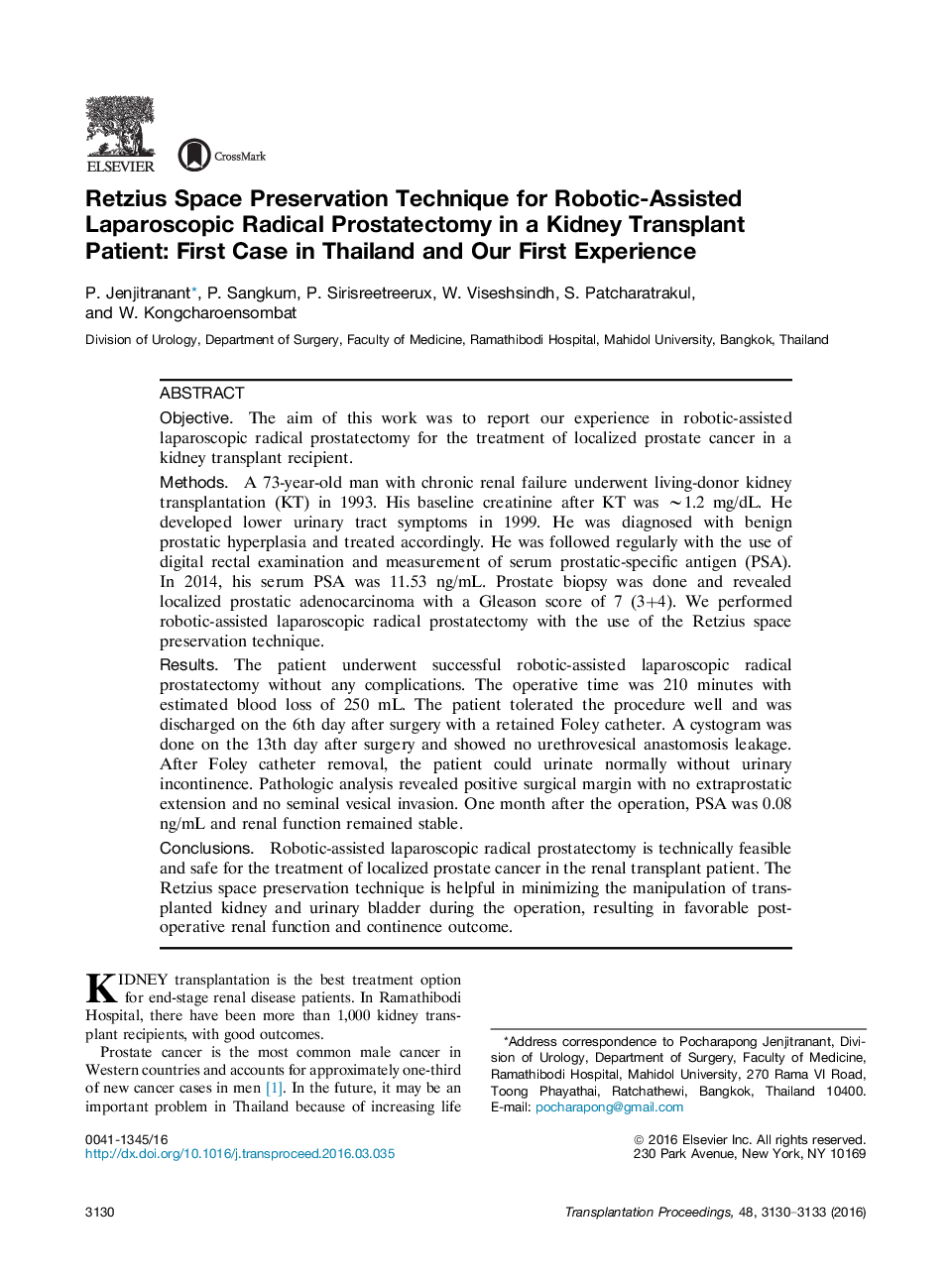| کد مقاله | کد نشریه | سال انتشار | مقاله انگلیسی | نسخه تمام متن |
|---|---|---|---|---|
| 5729049 | 1411674 | 2016 | 4 صفحه PDF | دانلود رایگان |
- The Retzius space preservation technique is feasible, safe, and associated with low morbidity.
- This technique is a good option for patients who require robotic-assisted laparoscopic radical prostatectomy.
- This is the 1st case report of this technique in a kidney transplant patient in Thailand.
ObjectiveThe aim of this work was to report our experience in robotic-assisted laparoscopic radical prostatectomy for the treatment of localized prostate cancer in a kidney transplant recipient.MethodsA 73-year-old man with chronic renal failure underwent living-donor kidney transplantation (KT) in 1993. His baseline creatinine after KT was â¼1.2 mg/dL. He developed lower urinary tract symptoms in 1999. He was diagnosed with benign prostatic hyperplasia and treated accordingly. He was followed regularly with the use of digital rectal examination and measurement of serum prostatic-specific antigen (PSA). In 2014, his serum PSA was 11.53 ng/mL. Prostate biopsy was done and revealed localized prostatic adenocarcinoma with a Gleason score of 7 (3+4). We performed robotic-assisted laparoscopic radical prostatectomy with the use of the Retzius space preservation technique.ResultsThe patient underwent successful robotic-assisted laparoscopic radical prostatectomy without any complications. The operative time was 210 minutes with estimated blood loss of 250 mL. The patient tolerated the procedure well and was discharged on the 6th day after surgery with a retained Foley catheter. A cystogram was done on the 13th day after surgery and showed no urethrovesical anastomosis leakage. After Foley catheter removal, the patient could urinate normally without urinary incontinence. Pathologic analysis revealed positive surgical margin with no extraprostatic extension and no seminal vesical invasion. One month after the operation, PSA was 0.08 ng/mL and renal function remained stable.ConclusionsRobotic-assisted laparoscopic radical prostatectomy is technically feasible and safe for the treatment of localized prostate cancer in the renal transplant patient. The Retzius space preservation technique is helpful in minimizing the manipulation of transplanted kidney and urinary bladder during the operation, resulting in favorable postoperative renal function and continence outcome.
Journal: Transplantation Proceedings - Volume 48, Issue 9, November 2016, Pages 3130-3133
